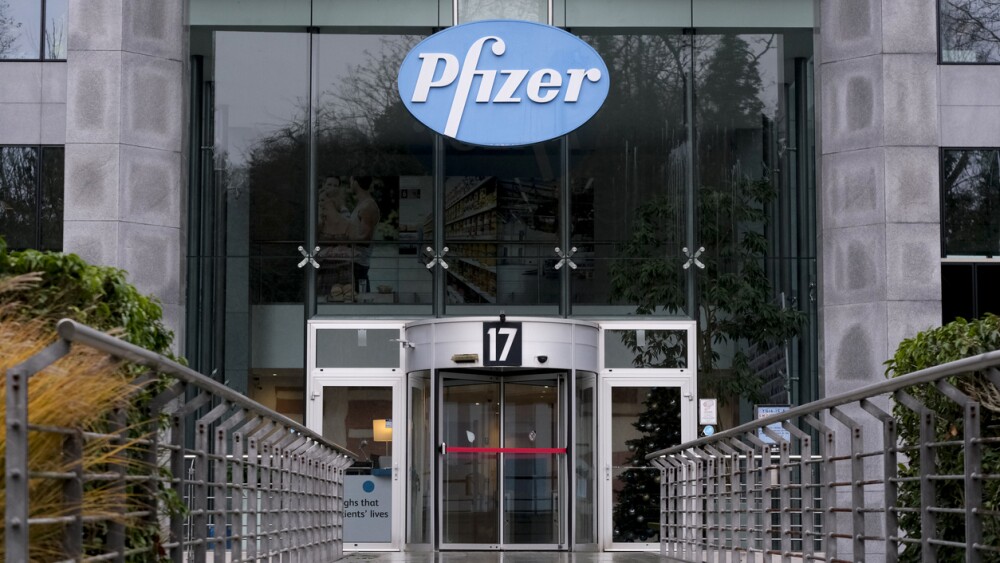Sight Sciences, Inc. announced the publication in Clinical Ophthalmology of the six-month primary results from the SAHARA randomized controlled trial.
Interventional eyelid procedures enabled by TearCare technology successfully delivered clinically and statistically significant improvements in every sign and symptom measured at every time point through six months
MENLO PARK, Calif., Dec. 18, 2023 (GLOBE NEWSWIRE) -- Sight Sciences, Inc. (Nasdaq: SGHT) (“Sight Sciences,” or the “Company”), an eyecare technology company focused on developing and commercializing innovative technology intended to transform care and improve patients’ lives, today announced the publication in Clinical Ophthalmology of the six-month primary results from the SAHARA randomized controlled trial (“RCT”).
“We are extremely pleased to have the successful six-month results of the SAHARA RCT now published in a peer-reviewed journal. The data from this trial support our belief in the clinical efficacy of interventional eyelid procedures enabled by TearCare technology versus the most commonly prescribed dry eye therapeutic for meibomian gland dysfunction,” said Paul Badawi, Co-Founder and Chief Executive Officer of Sight Sciences. “We plan to now focus on sharing these results with Medicare and commercial payors as we pursue fair and reasonable reimbursed market access to our technology.”
The data generated in the SAHARA RCT demonstrates that interventional eyelid procedures for dry eye disease enabled by TearCare technology (“TearCare”) were superior at all measured time points through 6 months to twice daily Restasis® prescription eyedrops (“Restasis”) for the improvement of tear break up time (“TBUT”), the trial’s primary dry eye signs endpoint and a key measure of aqueous retention, tear stability and the tear film’s ability to protect the ocular surface. "While RESTASIS has been a longstanding staple in dry eye therapy, the findings from the SAHARA RCT, highlighting the efficacy of TearCare in addressing the underlying causes of evaporative dry eye, encourage a reconsideration of prioritizing interventional treatment over a prescription-based approach," remarked Brandon Ayres, MD, Co-Director of the Cornea Fellowship Program at Wills Eye Hospital and a Principal Investigator for the SAHARA clinical trial.
TearCare was also superior to Restasis in several other important objective signs of dry eye and delivered statistically significant and clinically meaningful improvements from baseline in all other measures that were at least as good as Restasis at all time points. SAHARA included 345 subjects at 19 sites in 11 states randomized 1:1 to either TearCare or Restasis. TearCare and Restasis delivered clinically comparable and statistically significant improvements at every time point measured in patient reported outcomes measured by Ocular Surface Disease Index (“OSDI”) scores, the trial’s primary symptoms endpoint.
SAHARA Phase I Complete Results:
- TearCare was superior to Restasis in the objective improvement of TBUT at every time point measured (one week, one month, three months, and six months). Patients receiving TearCare treatments exhibited statistically significant improvements in TBUT from baseline as early as one week and reaching a 2.4-second improvement from baseline at six months.
- TearCare was also superior to Restasis in three other objective functional assessments of the underlying health of the meibomian glands, including meibomian gland secretion score, the number of glands yielding any liquid, and the number of glands yielding clear liquid.
- TearCare and Restasis both demonstrated comparable statistically significant improvements at all time points measured for corneal and conjunctival staining, key indicators of corneal and conjunctival health. TearCare and Restasis delivered comparable statistically significant improvements in tear production, as measured by Schirmer Test. Restasis is indicated to increase tear production in patients whose tear production is presumed to be suppressed due to ocular inflammation associated with keratoconjunctivitis sicca.
- TearCare and Restasis also delivered comparable statistically significant clinical improvements in OSDI scores, Symptoms Assessment in Dry Eye (“SANDE”) scores, and Eye Dryness Scores (“EDS”), patient reported outcomes to subjectively assess dry eye severity.
| TBUT Improvement from Baseline (seconds) | |||
| TearCare | Restasis | P Value | |
| Week 1 | 1.50 | 0.74 | 0.0001 |
| Month 1 | 1.64 | 1.05 | 0.0055 |
| Month 3 | 1.91 | 1.32 | 0.0080 |
| Month 6 | 2.39 | 1.63 | 0.0006 |
| OSDI Score Improvement from Baseline * | ||
| TearCare | Restasis | |
| Week 1 | 15.93 | 15.86 |
| Month 1 | 16.47 | 16.77 |
| Month 3 | 15.82 | 18.81 |
| Month 6 | 19.52 | 19.68 |
* At all time points, both groups significantly improved from baseline, P<0.0001
In the next phase of the SAHARA trial, subjects in the Restasis cohort cease use of Restasis, receive an interventional eyelid procedure with TearCare, and will be monitored for another six months. Subjects in the TearCare cohort will receive additional interventional eyelid procedures as necessary based on pre-determined criteria over an additional 18 months (24 months total study period) to measure the durability of procedural treatment effect. The Company expects publication of the 1-year crossover clinical results by year-end 2024.
Authors and affiliations: Dr. Brandon D Ayres MD (Private Practice), Dr. Marc R Bloomenstein OD of Schwartz Laser Eye Center, Dr. Jennifer Loh MD of Loh Ophthalmology Associates, Dr. Thomas Chester OD of Cleveland Eye Clinic, Dr. Bobby Saenz OD MS of Rosenberg School of Optometry and Lasik San Antonio, Dr. Julio Echegoyen MD PhD of Gordon Schanzlin New Vision Institute, Dr. Shane R Kannarr OD of Kannarr Eye Care, Dr. Victor L Perez MD of Bascom Palmer Eye Institute, Miller School of Medicine, University of Miami, Jaime E. Dickerson Jr., PhD of Sight Sciences and University of North Texas Health Science Center, and Afua Ohene-Nyako of Sight Sciences.
Paper Reference: Ayres BD et al. A Randomized, Controlled Trial Comparing Tearcare® and Cyclosporine Ophthalmic Emulsion for the Treatment of Dry Eye Disease (SAHARA). Clinical Ophthalmology (2023) Volume 17 Pages 3925-3940. https://www.dovepress.com/a-randomized-controlled-trial-comparing-tearcare-and-cyclosporine-opht-peer-reviewed-fulltext-article-OPTH
About Sight Sciences
Sight Sciences is an eyecare technology company focused on developing and commercializing innovative solutions intended to transform care and improve patients’ lives. Using minimally invasive or non-invasive approaches to target the underlying causes of the world’s most prevalent eye diseases, Sight Sciences seeks to create more effective treatment paradigms that enhance patient care and supplant conventional outdated approaches. The Company’s OMNI® Surgical System is a minimally invasive glaucoma surgery (“MIGS”) technology indicated to reduce intraocular pressure in adult patients with primary open-angle glaucoma (“POAG”), the world’s leading cause of irreversible blindness. The Company’s TearCare System technology is 510(k) cleared for the application of localized heat therapy in adult patients with evaporative dry eye disease due to meibomian gland dysfunction (“MGD”) when used in conjunction with manual expression of the meibomian glands, enabling office-based clearance of gland obstructions by physicians to address the leading cause of dry eye disease. The Company’s SION™ Surgical Instrument is a manually operated device used in ophthalmic surgical procedures to excise trabecular meshwork.
For more information, visit www.sightsciences.com.
OMNI and TearCare are registered trademarks of Sight Sciences.
SION is a trademark of Sight Sciences.
Restasis is a registered trademark of Allergan, an AbbVie company.
© 2023 Sight Sciences. All rights reserved.
Forward-Looking Statements
This press release, together with other statements and information publicly disseminated by the Company, contains certain forward-looking statements within the meaning of Section 27A of the Securities Act of 1933, as amended, and Section 21E of the Securities Exchange Act of 1934, as amended. The Company intends such forward-looking statements to be covered by the safe harbor provisions for forward-looking statements contained in the Private Securities Litigation Reform Act of 1995 and includes this statement for purposes of complying with these safe harbor provisions. Any statements made in this press release that are not statements of historical fact, including statements about our beliefs and expectations, are forward-looking statements and should be evaluated as such. Forward-looking statements include the Company's plans to share SAHARA results with Medicare and commercial payors to pursue reimbursement; conduct of the next phase of the SAHARA trial, and estimated timeline for publication of the 1-year SAHARA crossover clinical results. These statements often include words such as “anticipate,” “expect,” “suggests,” “plan,” “believe,” “intend,” “estimates,” “targets,” “projects,” “should,” “could,” “would,” “may,” “will,” “forecast” and other similar expressions. We base these forward-looking statements on our current expectations, plans and assumptions that we have made in light of our experience in the industry, as well as our perceptions of historical trends, current conditions, expected future developments and other factors we believe are appropriate under the circumstances at such time. Although we believe that these forward-looking statements are based on reasonable assumptions at the time they are made, you should be aware that many factors could affect our business, results of operations and financial condition and could cause actual results to differ materially from those expressed in the forward-looking statements. These forward-looking statements are subject to and involve numerous risks, uncertainties and assumptions, including those discussed under the caption “Risk Factors” in our filings with the U.S. Securities and Exchange Commission, as may be updated from time to time in subsequent filings, and you should not place undue reliance on these statements. These cautionary statements are made only as of the date of this press release. We undertake no obligation to update or revise any forward-looking statements, whether as a result of new information, future events or otherwise, except as required by applicable law.
Media contact
pr@SightSciences.com
Investor contact:
Philip Taylor
Gilmartin Group
415.937.5406
Investor.Relations@Sightsciences.com






